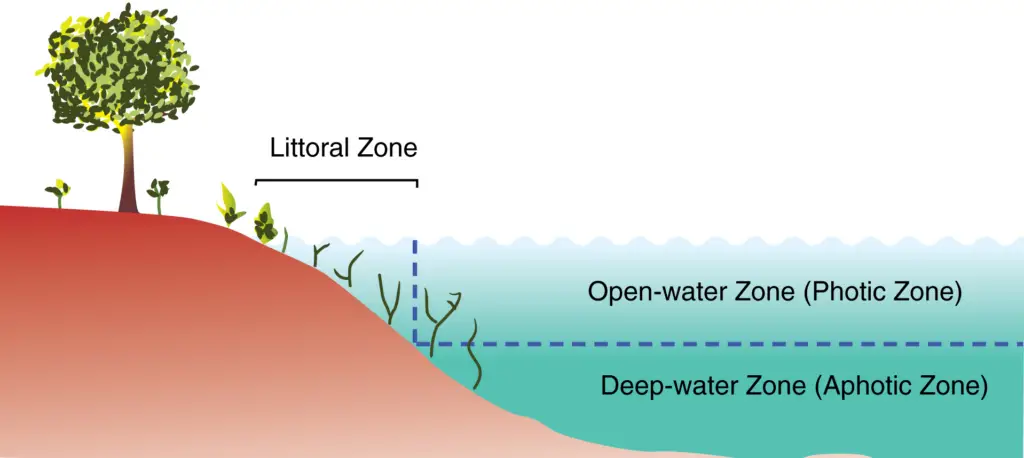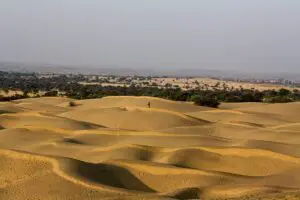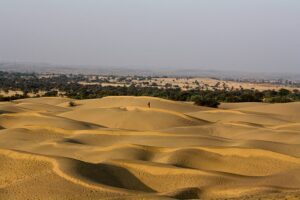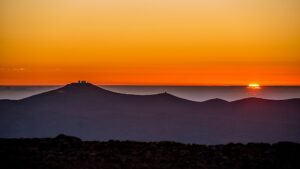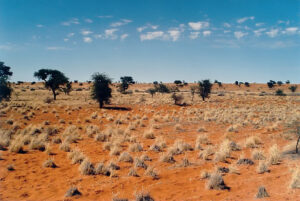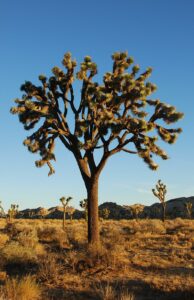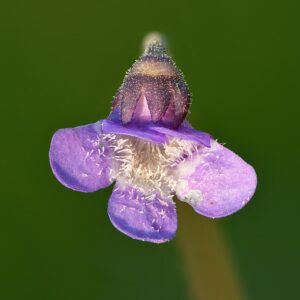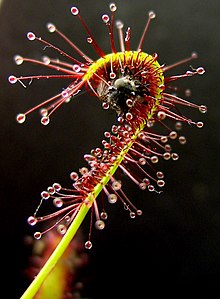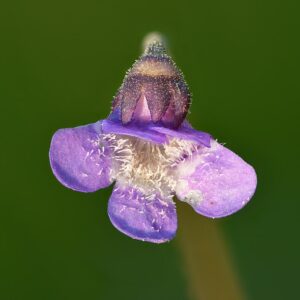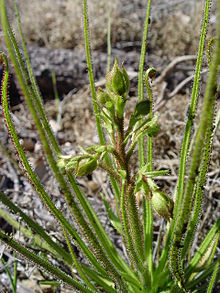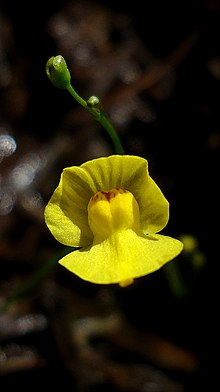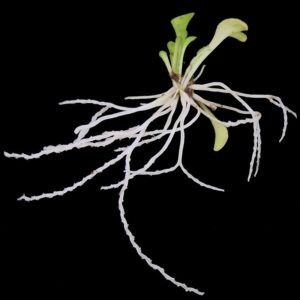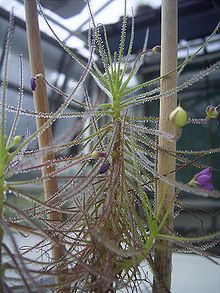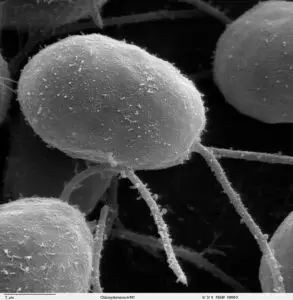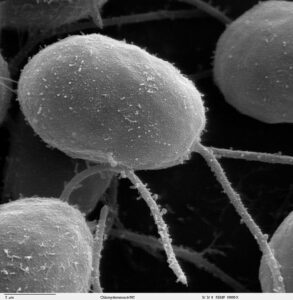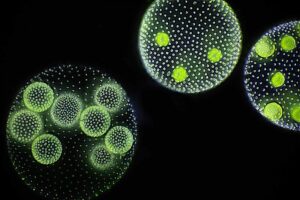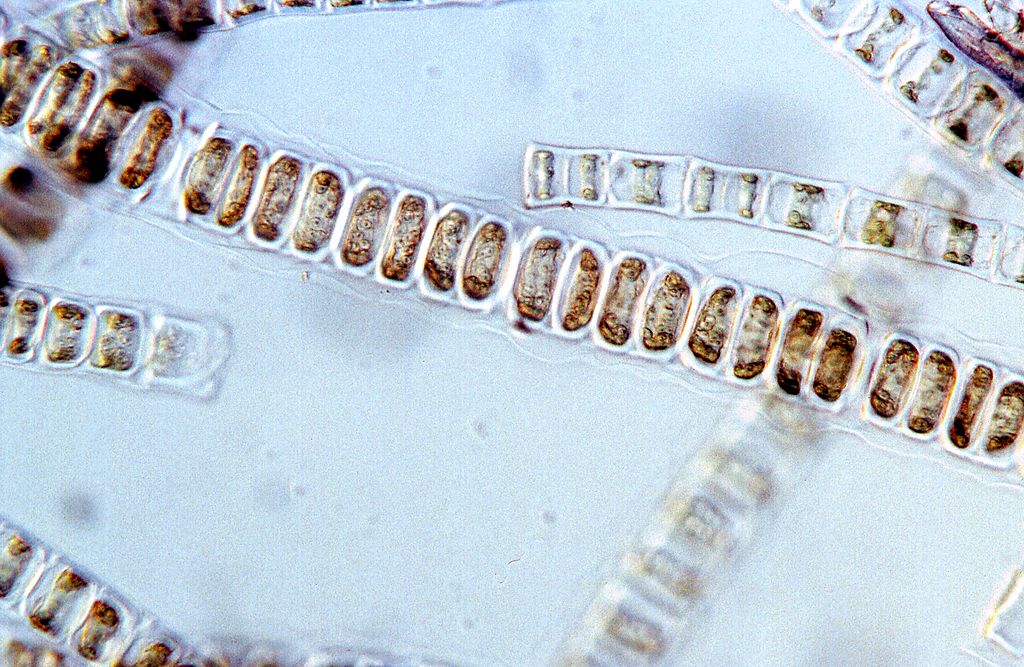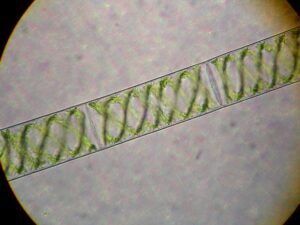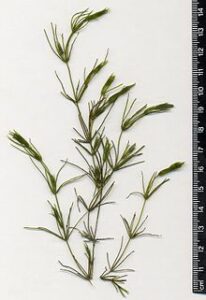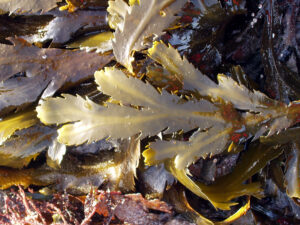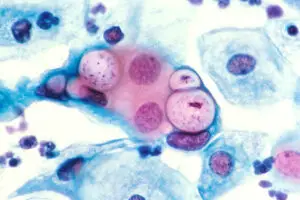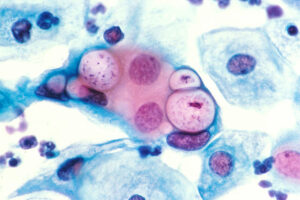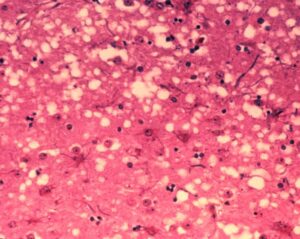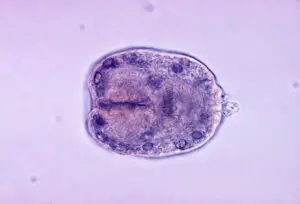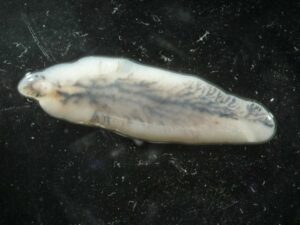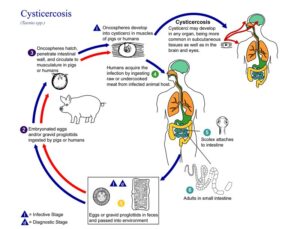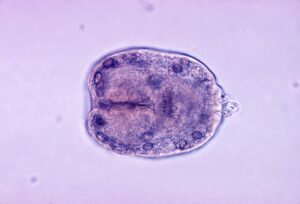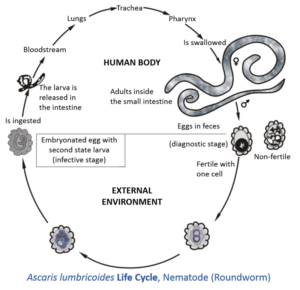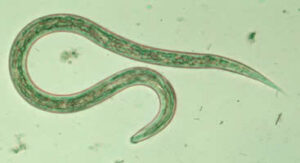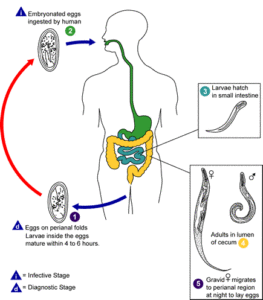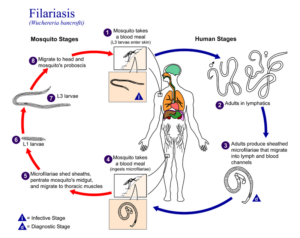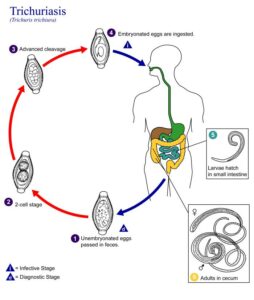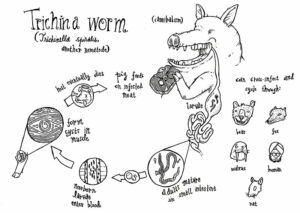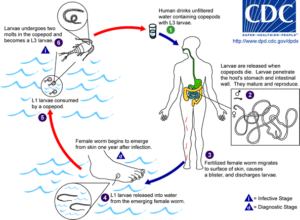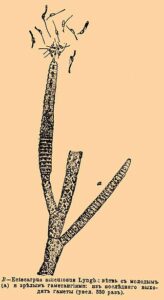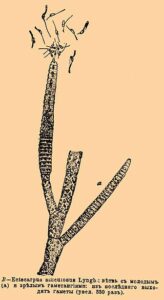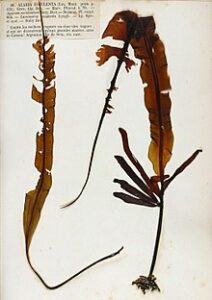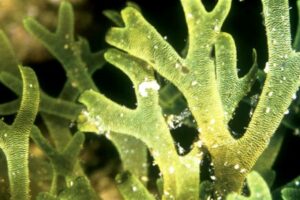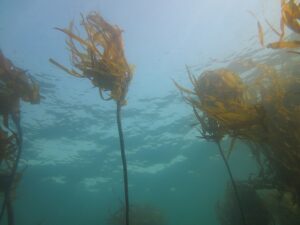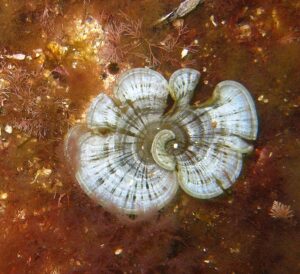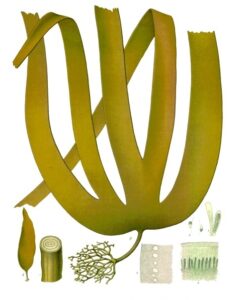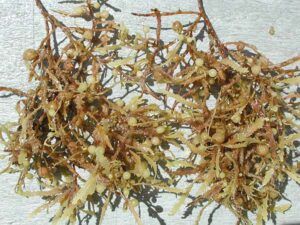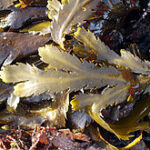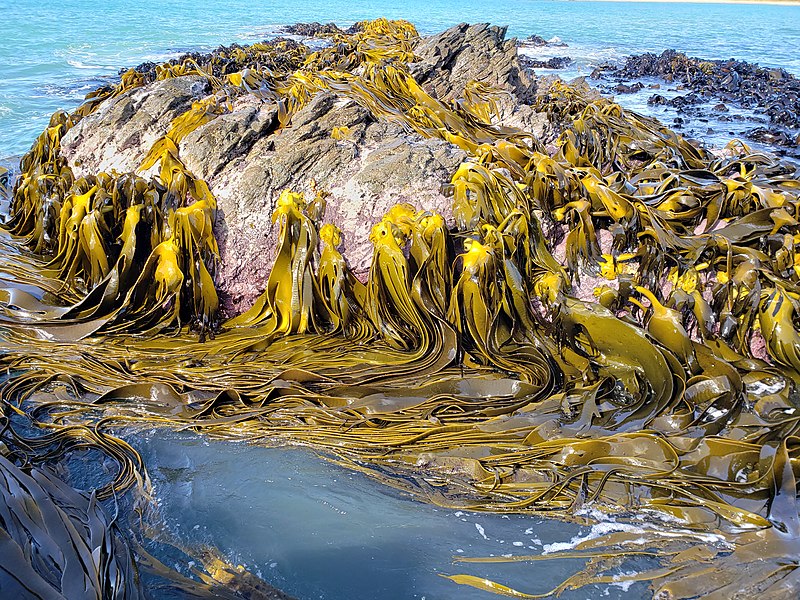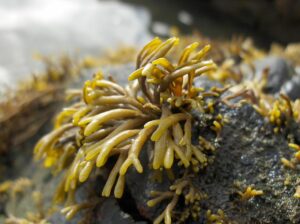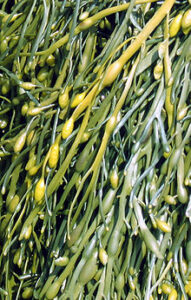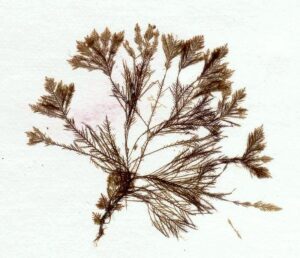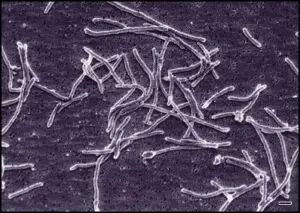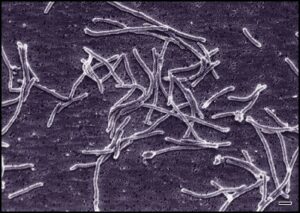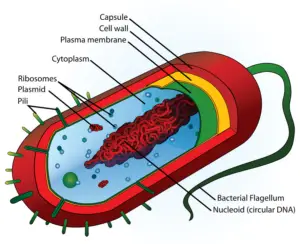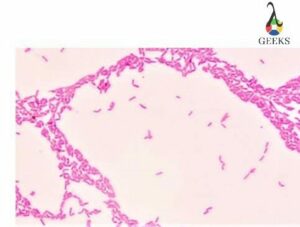Aquatic ecosystems are those that have water as their primary habitat. Aquatic ecosystem is classified on the basis of salt content in water. Many different kinds of aquatic communities like biomes show similarities wherever in the world they occur. Such communities are being referred to as biomes for convenience. These may be called aquatic ecosystems.
Aquatic ecosystem examples are:
- Fresh water ecosystem
- Streams and Rivers
- Ponds and Lakes
- Marine water ecosystem
- Open Seas
- Hydrothermal Vents
- Sea Shores
- Estuaries ecosystem

Fresh water ecosystem
There are two main types of freshwater ecosystem: streams and rivers, ponds and lakes.
Streams and Rivers
The streams and rivers are running and hence ever changing, inland fresh waters. Because it has a huge surface area to absorb oxygen from the air, moving water in streams and rivers is usually well oxygenated.It maintains its oxygen content unless it is polluted by sewage or industrial wastes.
Physical factors and Organisms:
- It has a lower mineral concentration and more light penetration than sea water. The perennial rivers originate from springs or melting glaciers.
- They are narrow and have cool, swift-flowing water in the upper reaches. In the middle reaches, they become wider, volume of water also increases but its flow become slower.
- With more sunlight available, the temperature of the water rises, and sediments are deposited on the riverbed. In the lower reaches, flow of water slows down further, water is usually muddy and light is reduced at the riverbed.
- Filamentous algae grow on the rocks. Insect larvae and fishes, such as trouts are common.
- In slow water, grow plankton, attached algae, aquatic mosses and grasses, submerged seed plants and reeds as producers. The consumers include flatworms , leeches, water insects, crayfish, mussels, snails, fishes, crocodiles, otters, musk-rat and mink. Many birds and mammals get their food from the water.
Ponds and Lakes
The ponds and lakes are stagnant inland waters. Ponds are small, but very common. Every village has a pond, natural or man-made. The pond receive water from rain and surface runoff.
Physical factors and Organisms:
- The ponds vary greatly in size. Small ponds are often seasonal. Large ones are perennial, at least in their central region. Though not flowing, pond water slowly circulated by winds.
- Ponds have a great deal of vegetation, both floating on the surface and rooted at the bottom. This supports a plenty of animal life like Phytoplankton, zooplankton, rotifers, minute crustaceans, Nekton like Wolfia, pistia, azolla.
- Macrophytes such as Ceratophyllum and Utricularia float just below the surface. The bottom dwelling animals inlcude Hydra, prawns, crabs, mussels and snail.
Lakes are often large and deep, upto 100 metres. They have permanent water. The lakes develop in three ways:
- As natural or man-made depressions filled with water,
- As a result of glaciation, and
- As a cutoff acute bend of a winding river. The lake formed by the last method is called ox-bow or cut-off lake.
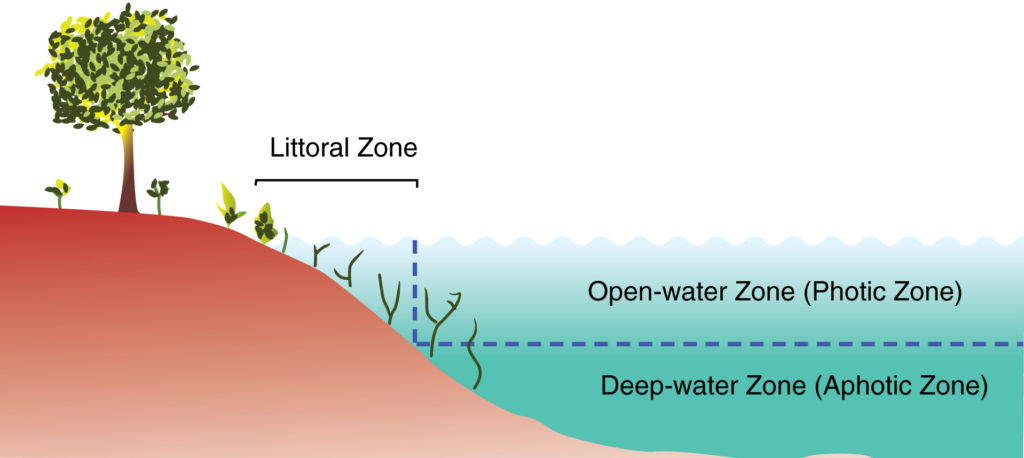
The physical factors of lakes depend on the source of water, location, altitude , latitude and surrounding biome. In lake’s open surface waters, occur floating plants, which need sunlight and animals that need oxygen, such as fishes and small arthropods. The deep waters of the large lakes are still and have less oxygen, poor light and low temperature. The rooted vegetation is absent there and the animal life is represented by a few annelids, clams and midge larvae.
Marine water ecosystem
The marine water has a high concentration of salt and mineral ions, about 3.5%.Sodium and chloride are the most abundant ions, followed by sulphur, magnesium, and calcium. Water salinity varies somewhat at different depths and near the surface. It is at its lowest around river mouths and poles.
Physical factors:
- Temperature of the surface water varies at different latitudes. At the equator, temperatures are around 28°C, while near the poles, temperatures are below zero.It is minor in deep waters. Water is ice cold at great depths.
- Hot and cold currents keep the ocean water in continuous circulation.Light varies at different depths of the ocean.
Regarding availability of light for photosynthesis, the ocean is divided into 3 vertical zones:
- Photic or Euphotic Zone : It is the upper 200 metres well lighted region.
- Aphotic Zone: It is the dim light region from 200 to 2000 metres.
- Abyssal Zone: It is the permanently dark region below 2000 metres.
Nature of sea floor varies in different regions. It is described in individual biomes. Pressure increases in the ocean with depth, approximately at the rate of one ton to a square inch for every 1800 metres.
The ocean is divided into 3 major ecosystems : open seas, hydrothermal vents, sea shores or coastal regions.
Open Seas
Physical factors:
The open seas are so very vast that their physical conditions vary greatly in different regions.The depth, pressure, temperature, and oxygen concentration of water are all characteristics that show fluctuations.The open sea has all the three light zones: photic, aphotic and abyssal. Sea water is in continuous circulation due to currents. Sea floor is soft, but highly uneven.
Organisms :
The organisms of the open seas are classified ecologically into three categories: plankton, nektons and benthos.

Plankton:
They are microscopic organisms that float and drift in surface waters as a result of waves, currents, and wind.They have very weak or no locomotory organs. The common phytoplankton are diatoms and the common zooplankton are protozoans, tiny crustaceans, larvae and eggs. The plankton is confined to the photic region only.
Nektons:
These are the actively swimming animals. They have well-developed locomotory organs. They occur in surface as well as deep waters. They include jellyfishes, cuttlefishes, sharks, bonyfishes, turtles, snakes, seals, whales, etc. Both photic and aphotic zones are occur in nektons.
Benthos:
These are animals that live on the bottom and crawl over, burrow through, or are linked to it. Crabs, starfish, brittle stars, and sea urchins lurk beneath the surface. Clams, and sea cucumbers dig into the spongy ground. Attached are sponges, corals, sea pens, and tunicates.
Hydrothermal Vents
The hydrothermal vents are hot water springs in the deep ocean. The vents, where temperature is suitable for life, have rich fauna comprising coelenterates, clams and crabs. The majority of these creatures are unknown to science.
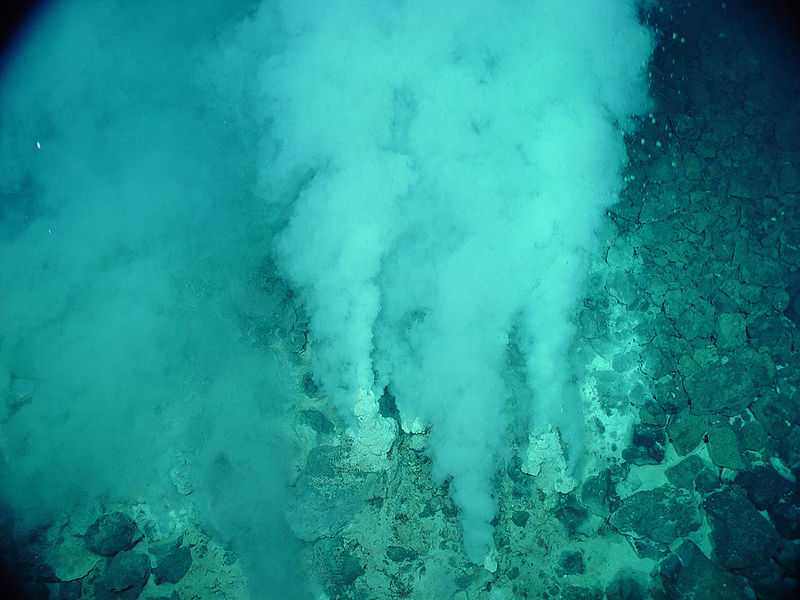
How these animals live in total darkness at a depth of several thousand metres in the complete absence of green plants is an interesting matter. The water from the hydrothermal vents contains a variety of dissolved minerals and a high concentration of hydrogen sulphide. Mixing of this water with oxygen rich ocean water oxidizes H2S, producing energy. This energy is used by bacteria in their metabolism.
Sea Shores (Coastal Regions)
Every day-night cycle, the tide alternates between exposing and covering the intertidal zone. The tidal action causes a great mechanical disturbance and brings about drastic changes of temperature, light, moisture and salinity. There is abundance of light, oxygen, carbon dioxide and minerals and this makes the intertidal region one of the most favourable habitats of the world, Inspite of the above difficulties. The substratum may be rocky, sandy or muddy.
Physical factors and Organisms:
- The intertidal region teems with life. Mudflats occur where water moves slowly enough to deposit a sediment of small particles. Algae cover the particles and provide food for a variety of burrowing insects, crustaceans and clams.
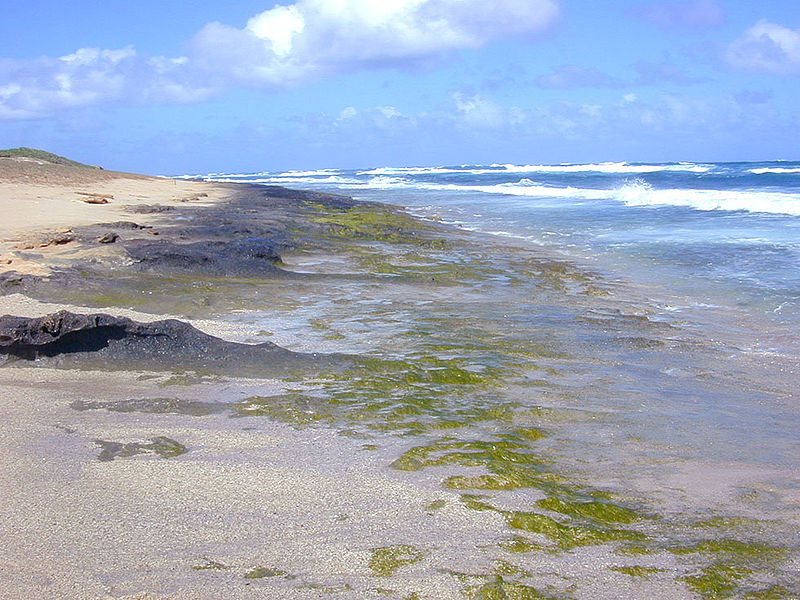
- Minute protists and crustaceans living between sand grains feed on plankton stranded when the tide is out, or on algae attached to the sand grains. Many kinds of shore birds feed on the invertebrates.
- Very few vertebrates live in the intertidal zone. However, a number of birds visit at low tide to scavenge or prey on invertebrates.
- The Subtidal zone is seaward to the intertidal zone, and varies in depths from about 50 to some 200metres. There is no air exposure. Water is well oxygenated. Light is abundant. Mineral nutrients are readily available, washed from land by rivers.
- Plankton include minute algae and protozoans. Nekton comprise variety of fish. Benthos have large seaweeds, sponges, crustaceans, sea-urchins, sea-cucumbers, brittle stars, and molluscs.
Estuaries Ecosystem
The region where rivers enter the oceans are known as estuaries. It is the example of Aquatic ecosystem example
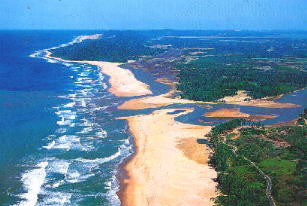
Physical conditions and Organisms
- Estuary waters are very fertile. Minerals, oxygen, carbon dioxide, and light are available in plenty. Water is less saline than in the sea as it mixes with fresh water from the rivers.
- Tide action brings about rapid circulation of nutrients and helps in removal of waste products.
- Estuary waters often have more life than the adjacent sea or the fresh water up the river.
- Plankton include microscopic as well as large forms. These include diatoms, algae, protozoans, small crustaceans, etc.
- A large number of species of bony fishes form the nekton fauna. Benthonic life comprises algae, fixed plants, clams, snails, prawns, crabs, oysters , skates and rays.
Define Coral Reefs.
Coral reef occur in clear, shallow, warm water where temperature rarely falls below 200C and there is enough light for photosynthesis. Reefs are made up of calcareous material secreted by the coral polyps and lime-secreting algae. Most of the coral reef is submerged, although its top may be exposed at low tide. A reef being rocky, provides anchorage for algae and sessile animals. Variety of swimming invertebrates and fishes find shelter in the reef cervices. Coral reef is the highly productive part of the coastal region. It is one of the example of Aquatic ecosystem example.
Summary
To wrap up our post, we conclude that Aquatic ecosystem is vast and there are also many different kinds of aquatic communities. Mainly, aquatic ecosystem is divided into three categories- Fresh water, Marine and Estuaries ecosystem. All the aquatic system have different life and physical factors.
- 7 Ribosomal RNA Function:16S, 23S, 28S And Detailed Facts
- 11 Springtail Characteristics: 9 Facts You Should Know!
- 21 Butterflies Examples & Types: Facts That You Should Know!
- 7 Butterflies characteristics: 23 Facts You Should Know!
- 13 Spider Examples & Types : Facts That You Should Know!
- 7 Spider Characteristics: 23 Facts You Should Know!
Also Read:
